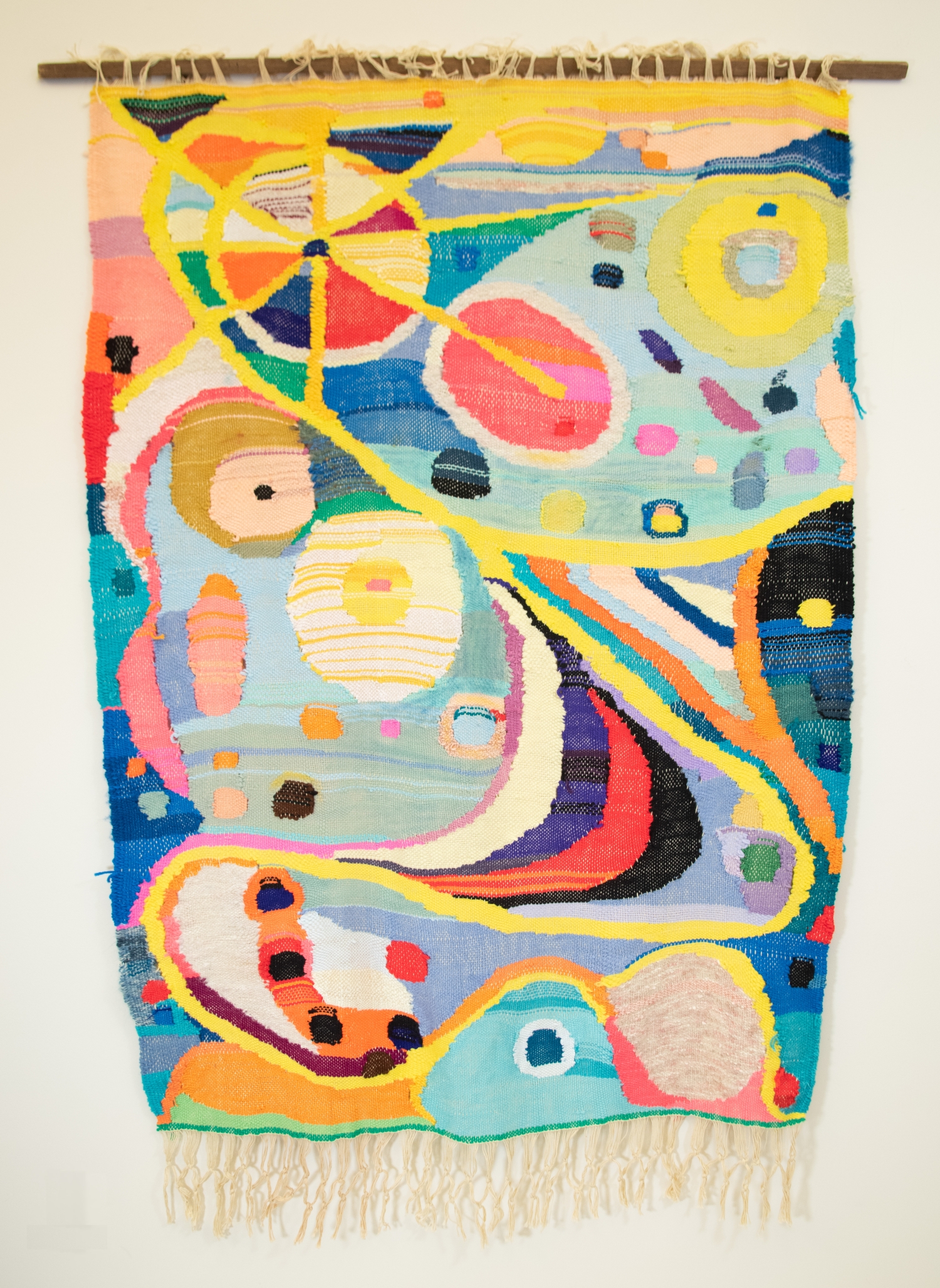Milky Way
Gabriella Polony Mountain's work includes four major themes. The first three themes are clearly recognizable as the Cosmos, Nature, and Figural works with the fourth theme encompassing history, philosophy, and culture. In her life as an artist, Polony Mountain worked with many different medium including mosaics, weavings, sculpture, stained glass, and repousse. Weaving is a technique used to make textiles by interlacing thread. This technique can be accomplished with the use of an instrument called a loom, or by hand in various methods such as knitting, crocheting, felting, braiding, or plaiting. Polony-Mountain used a combination of loom and hand weaving techniques. And like her weaving techniques, Polony-Mountain used a combination of acrylic, cotton, and wool yarns to create her vibrant textiles.
The "Milky Way" is a wonderful example of Polony Mountain's depiction of the cosmos. Using biomorphic forms, circles, and curvilinear lines to create an overall view of the cosmos. The biomorphic forms which included circles within circles of varying size allude to the cellular structure of things. A winding yellow path, beginning in the lower right corner of the weaving and moving its way upward to the top left, connects the many cosmic elements. Polony Mountain uses bright and vivid colors to portray her cosmos.
A lovely example of the artist's unique ability to leap from one kind of material and form to another and to shift thematic content to create art.

